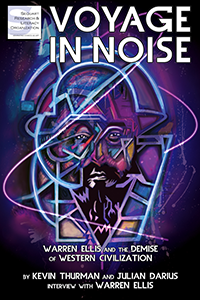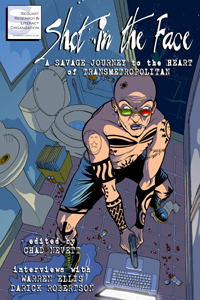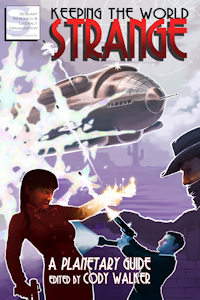This is the fourth annual State of American Comics Address that I have given. The State of American Comics Address is intended to sum up, in retrospect and for the historical record, the American comics industry of the previous year. The address not only notes the highs and lows of the previous year, but offers commentary on where the industry is going, addressing relevant concerns and issues.
Marvel
In recent years, Marvel has garnered a lot of attention. 2003 has seen some sliding. Before discussing this reversal, which focused around Bill Jemas being outed as Publisher, it is worth noting a few of the major stories relating to Marvel during 2003.
There was, of course, 1602 — the Neil Gaiman-scripted mini-series begun in 2003. While not up to the level of Gaiman’s literary best, the story has intrigued many with its transposition of Marvel’s heroes upon the Renaissance. However simplistic it seems in comparison with truly literary comics, the story has found a new level of success in intelligently blending super-heroics with history.
The aborted firing in 2003 of Mark Waid from Fantastic Four can only be read as a remarkably shortsighted move, especially given the multitude of disparate stories surrounding the reasons for the firing. In restoring Waid, Marvel must at least be credited with admitting wrong, however. And it is worth noting, in the following consideration, that Bill Jemas in this case seemed against talent and innovation, preferring the team that would eventually work on 4 to Waid and Wieringo.
Bendis and Maleev continue on their landmark Daredevil for Marvel Knights, at least following David Mack’s disappointing and widely panned five-part fill-in arc. The series (under Bendis) effectively removed its protagonist’s secret identity and which set the stage for others, including Captain America at Marvel Knights, following suit. Grant Morrison, now concluding his noteworthy run on New X-Men, similarly took the characters out of their tights and into more leathery uniforms, adding a more realistic tone to the characters and their situations. “Planet X,” his penultimate storyline featuring Magneto, garnered tons of attention and praise even if it rather lacked a proper ending.
Marvel’s Epic Imprint
One of the boldest initiatives of 2003 was Marvel’s revived Epic imprint, announced in March 2003 and spearheaded by then-Publisher Bill Jemas. Epic promised to take unsolicited series proposals, offering unknown creators a chance to publish, through Marvel, stories featuring Marvel characters as well as creator-owned material. Marville #7 devoted itself entirely to the guidelines of soliciting to the imprint. Fans were ecstatic; critics wondered about lines suggesting these comics would neither sell well nor even be effectively copyedited.
Deluged by proposals, Epic suspended taking submissions for creator-owned material. Many expected this suspension to be permanent, and they were proven correct. Epic quickly suspended taking submissions entirely. Bill Jemas’s removal as publisher in October also removed the imprint’s defender, and many saw it as not being long for this world. Again, these cynics were proven correct.
The imprint began publication with the five-issue mini-series Trouble, which in retrospect seems a rather ironic title. Scripted by Mark Millar and unofficially featuring Spider-Man characters, the series sold fairly well, but apparently not well enough: its trade paperback collection was cancelled after solicitation. Crimson Dynamo, the line’s only ongoing, experienced artistic changes before being announced — prior to #3′s publication — that it was being put on hiatus following #6. On the upside, its low-profile writer, John Jackson Miller, was tapped to take over Iron Man. The creator-owned Gun Theory, solicited as a four-issue mini-series, was cancelled with #2 — despite critical praise and that the story was only half told.
Epic announced that its already accepted work would be repackaged together as a quarterly anthology, with sales determining whether the anthology would continue. This seemed dubious given American comics readers’ dislike of both quarterlies and anthologies. After hassles over Marvel’s changes, one series – Phantom Jack — moved to Image Comics. Epic Anthology would include Robert Kirkman and Khary Randolph’s “Sleepwalker,” Rob Worley and Andy Kuhn’s “Young Ancient One” and Jason Henderson and Greg Scott’s “Strange Magic.” The book received little promotion and was incorrectly solicited with a $8.99 cover price, though Diamond Comics corrected the price to $5.99. The final nail to Epic came in mid-February, when Marvel announced that #1 would indeed be the final issue.
Epic must be remembered as one of 2003′s noblest experiments, and its failure must be remembered as a sad note for the health of the industry. If accepting tons of proposals (perhaps literally) was unwieldy, certainly some solution could have been worked out. The real problem remains Marvel’s commitment to publish fewer comics that sell better than its competitors, a plan that has succeeded well but left the company with very little diversity. It has painted itself into a corner with its utter focus on its line of super-heroes, and even if these characters generate profit from Hollywood in the present (under Avi Arad’s influence), Marvel’s future remains uncertain. Artistically, it relies upon effectively buying popular and talented creators who produce secondary or inferior work for the company on a work-for-hire basis. Commercially, it relies upon a largely static if not shrinking base of super-hero readers. Epic, perhaps the ultimate fulfillment of Marvel’s increased relevancy under Publisher Jemas and Editor-in-Chief Quesada, has understandably been the first to go in the wake of Marvel’s post-Jemas conservatism.
Marvel 2003 in General
If Epic represented a bold but flawed initiative, Tsunami represented a confusing and equally ill-conceived one. A “non-line” of supposedly manga-influenced ongoings, Tsunami sought to respond to the growing popularity of manga — an understandable desire. What exactly constituted this response, however, varied title by title. Many titles were illustrated in a manga-influenced style. Others featured some Japanese element. Many had little discernable connection, however, to manga at all. Perhaps most crushingly, these were titles featuring new and ancillary characters, running around the Marvel universe, rather than having the approachability and self-contained nature that draws so many to manga. It seems as if, much like briefly assigning a Japanese manga artist to Uncanny X-Men, the desire was to capture the success of manga without any substantive changes.
In this, Marvel is not unique, although the lackluster Tsunami stands as the largest exemplar of this poor thinking. This line of thought — or lack thereof — has led, throughout the industry, to various levels of manga-influenced artistic styling, often on titles for which such a style is utterly inappropriate. Imagine a writer who thinks of Watchmen as an exemplar illustrated by an artist who would be at home illustrating Go Panda! or somesuch. Thinking this will increase sales somehow stinks of a remarkable lack of imagination.
At the same time, the controversy Marvel projects have generated in recent years, often through somewhat gutsy projects, seems rather dead following Jemas’s departure. Moving a number of titles early this year to the slightly more edgy Marvel Knights imprint seems part of an agenda that sees the mainstream Marvel titles getting more traditional and kid-friendly. Marvel’s recent trends — away from costumes and secret identities, instead moving towards personal and political stories — now seem to have reversed themselves. 2004 will see New X-Men‘s title changed back simply to X-Men, a symbolic emblem for Marvel’s return to traditional super-hero costumes and conflicts.
This agenda may also be seen in the new Marvel Age imprint that explicitly focuses on kid-friendly material. The MAX imprint of mature readers comics, certainly deserving of praise, seems ever in jeopardy. Its sole star is the noteworthy Supreme Power. While Marvel continues its aggressive and praiseworthy program of trade paperbacks and various publication schedules, those publishing devices mean little if content is to be dumbed down to avoid alienating potential movie franchises.
Indeed, it is in the movie field that Marvel seems to be doing best, with a dozen or so movies now in production, and we can now call Marvel a movie-generating company just as it was officially a toy company in the 1990s before its bankruptcy. We might well question the outcome of this maneuver. Marvel has gone in recent years from a repressive, in many ways backward company to an industry leader in a number of respects. Now, as DC moves increasingly towards diversity and international content, Marvel appears to be deliberately regressing.
Titles such as Brian Michael Bendis’s Daredevil, Mark Millar’s The Ultimates and his forthcoming Spider-Man, J. Michael Straczynski’s Supreme Power, Garth Ennis’s The Punisher, and Mark Waid’s Fantastic Four will keep Marvel relevant — or at least readable — in 2004, but these titles are now distinctly bucking the trend rather than leading it.
DC 2003
This has been a year of transition: with Marvel on the wane, DC appears on the ascendant. This is in part because of Dan DiDio, who has — as editorial vice president — snatched scores of talented creators to exclusive contracts, fighting back against Marvel’s recruitment of talent that sparked Marvel’s recent renaissance of sorts. DiDio appears to be taking risks, and DC remains a more artistically secure company, conservative in its publishing practices (e.g. long delays between acceptance and publication) but widely diverse in its publications.
Formerly Known as the Justice League was an enjoyable sleeper hit, while Superman / Batman returned the classically fun if fluffy team of Loeb and McGuinness. “Hush,” running in Batman, garnered high sales but proved a critical disappointment, ultimately leaving more questions about the identity of Hush — the story’s mystery villain — than answers.
2004 promises a revival of the Superman line, and we shall have to see whether it satisfies more than “Hush.” The real story of 2004 for DC may well be its launching of European and manga imprints, expanding the already remarkably diverse company — that already includes mainstream and kid-friendly and mature readers and mature reader super-heroic and creator-owned imprints. The move may also but American comics in real dialogue with both the French and Japanese traditions for arguably the first time.
DC / WildStorm
Gone are the days of WildStorm’s heyday, in its first years at DC, with The Authority and Planetary. Sales are far lower. But WildStorms’s “Eye of the Storm” titles, suggested for mature readers, have brought a slight edge to super-heroics.
If the relaunched The Authority seems lackluster, Stormwatch: Team Achilles certainly has a smart niche market. As does Sleeper, which has garnered absolutely tremendous critical acclaim and is slated for relaunch. Wildcats 3.0 cleverly blends corporate stratagems with super-heroics. And Planetary returned, although it looks to be going back on hiatus.
Early 2004′s “Coup d’État” storyline, which actually had the Authority taking over the U.S., surely must stand as a remarkable moment in corporate-owned super-heroics: having the world explicitly dominated by super-heroes who are neither entirely good nor entirely bad — in continuity, establishing a new status quo — is typical of the quiet revolution going on at WildStorm.
DC / Vertigo
January 2003 marked Vertigo’s tenth anniversary, and it was a good year overall.
The big story for Vertigo in 2003 was Neil Gaiman’s The Sandman: Endless Nights hardcover, featuring stories illustrated by European greats as well as American talents — including Milo Manara (drool…), Barron Storey (long neglected), P. Craig Russell, Bill Sienkiewicz, and Frank Quitely. It has received rave reviews and brought attention to comics, combined as it was with Gaiman’s mainstream bookstore work.
Fables continues to be the standout book, artistically, for Vertigo. Y: The Last Man might get more buzz, being an easier read, but Fables satisfies for fun as well as intellectual cleverness — a rare accomplishment. New debuts The Losers and The Human Target are also worthy of note.
DC / WildStorm’s America’s Best Comics
Receiving a disproportionately large amount of critical attention to its sales, America’s Best Comics — published by DC / WildStorm and created by Alan Moore — continues to publish fairly important, if not revolutionary, comic books. This comes as Moore is publicly retiring from comics, outside of League of Extraordinary Gentlemen sequels. He has already left Tom Strong, the flagship ABC book. His mini-series Smax, a follow-up to the early ABC classic Top 10, is a wildly different beast than its precursor and probably the best fantasy story in years. Terra Obscura, a six-issue mini-series mostly written by Peter Hogan, ably reinvented largely forgotten Golden Age characters that Moore had brought back in Tom Strong years ago. Tom Strong’s Terrific Tales, an anthology, continues to be a mixed bag with some very high highlights. Promethea, the critical darling of the bunch, is in the process of wrapping up its run — and perhaps the ABC universe itself — under Moore’s direction. These are certainly titles deserving of increased sales, and probably even additional recognition.
A Note on Warren Ellis
It is worth pointing out that Warren Ellis, who became a comics luminary with The Authority and Planetary, has seen his star fall as of late. His many mini-series for DC, usually for a creator-owned division of WildStorm, have rather universally failed to satisfy. Each had some good idea, but he would have done better to combine them into larger mini-series with two good ideas. His original hardcover for Vertigo, Orbital, felt fine but inconsequential. Even Planetary, while enjoyable, has avoided the revolutionary highs it previously reached — and avoided the main thrust of its story, begun years ago and never finished. Ellis has now announced that his exclusive contract with DC is at an end, and it remains unclear what DC really got out of the deal, outside of the opportunity to publish a lot of lackluster creator-owned work while Ellis continued to work throughout for Avatar (since those projects were already planned).
JLA / Avengers
2003 was also the year that saw the beginning of JLA / Avengers, which we’ve only been awaiting for about twenty years. While sales were phenomenal, and the story had a crowded 1980s super-hero feel not unlike Crisis on Infinite Earths, this was genre stuff to the core. The mini-series is bound to continue to sell well (#4 has been delayed and has yet to see print), but I’m willing to bet that it will fare poorer as a trade over the next two decades than any number of other works. It’s hoopla, and hoopla worth reading, but more of an event than a classic story.
The Independents
Avatar Press deserves mention for its recruitment of major talent. The publisher was for many years known for its soft porn adventure comics until it recruited Warren Ellis, who writes the Strange Killings series of mini-series for the publisher. Unpublished, unadapted, or forgotten Alan Moore stories were added as well. 2003 saw more of all of this, as well as the beginning of a mini-series adapting Frank Miller’s script for Robocop 2 — and the result, even if the chapter breaks are jarring, is really rather stunning.
Image’s Top Cow began Mark Millar’s Wanted in December, even if the remainder of its output — such as Tomb Raider — leaves a bit to be desired. The other Mark Millar independent books — loosely grouped under the title “Millarworld” — did not see publication in 2003 and included mini-series for Dark Horse Comics and Avatar.
Other publishers deserve some mention. NBM continues to publish important work, including European adaptations such as Les Cités Obscuresas well as great English originals such as work by P. Craig Russell. Dreamwave still publishes Transformers comics, though fewer notice. Devil’s Due took G.I.Joe away from Image. CrossGen faced Armageddon — both inside and outside of their comics; its titles were radically slashed in 2003, it failed to pay a number of creators, and it got an infusion of cash that has not resolved questions regarding its long-term survival.
Then, of course, there is Dark Horse. Ah… The Escapist premiered this year. No, this address is on 2003. Ah… well… they have a lot of Frank Miller trade paperbacks, Lone Wolf and Cub, some Gaiman work, P. Craig Russell work… and… well, they publish Star Wars comics, don’t they?




































































